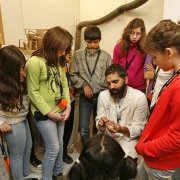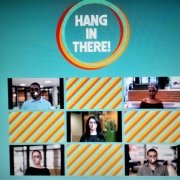Nightingale mentoring programme and network
Excerpt
This is a mentoring scheme where students become mentors to a child between 8-12 years old. The student meets the child once a week for 2 - 3 hours during a period of 8 months. The mentoring is not primarily to support the child's school work but rather to act as a big brother or sister and to do things that the child would like to do.
The idea behind the Nightingale mentoring concept is that the mentor gives the child a positive role model by establishing a personal relationship with the mentor child. This in turn helps strengthen the child’s personal and social confidence. The goal is that the child will perform better in school and in private and will be more likely to apply for university when the time comes. The concept is based on the idea of “mutual benefit” – benefit for both child and student.
The vision of the Nightingale Mentoring concept is to work towards greater multicultural and ethnic diversity within society’s institutions. The overall aspiration is that mentor children are able to make marked progress both inside and outside of school and that a broader range of young adults will apply for university or college.
Narrative, origins and objectives of the initiative
What kind of project is this? Please give a short description (summary) of it.
[embed]https://vimeo.com/159469535[/embed]
In the Nightingale Mentoring concept, a university student gets paired with one mentor child between the ages of 8 and 12. The mentor and child get together for 2-3 hours once a week over a period extending from October to May.
In order to improve diversity in universities there is a need to recruit students from cultures and societies where there is little or no tradition of children being involved in higher education studies. The Nightingale Mentoring concept is one effective instrument that, in the long run, can help to redress what is at the moment a major imbalance in our society.
Please tell us why, in general, this project is considered a successful one?
It has proven to be sustainable since 1997 and the testimonials from children and mentors have always been very positive. In 2002, the Nightingale project was rewarded with the city of Malmö’s integration prize. The programme has now spread to 24 different universities in Europe and Africa. Please read the summary of evaluations from different Nightingale locations: https://www.mah.se/upload/Student/Naktergalen/N%C3%A4ktergalen%202014/CarinaSL%C3%B6nroth30_T.pdf
And why would you consider it a grass-roots initiative?
The Swedish Nightingale Programme was born in 1997 at Malmo universty (inspired by the Perach project in Israel). It began as a three-year pilot project, funded by the Wallenberg foundation, and was institutionalised in 2005.
What challenges needed to be solved in this project?
Integration, widening participation and inclusion. Both the city of Malmo and Malmo University need partners to be able to tackle the challenges of today's society. It’s important that teacher students and other students can get an insight into children’s life/living conditions, be able to understand and explain but also be a link to improvement.
Is this initiative based on any particular theoretical framework? Which one?
Extensive mentoring research from 100 years’ experience; big brothers and sisters. For some research on mentoring see: http://nightingalementoring.org/?cat=17
(Appendix) Is your intervention standing on its own or is it a part of a bigger and more holistic approach?
The work towards Widening Participation is a profile for Malmo University but also regulated in the Swedish Higher Education act and part of the social dimension of Higher Education.
Please describe the group(s) intended as beneficiaries of this initiative
Why has this group (have these groups) been chosen?
The main target group are children between the ages of 8 - 12 from socio-economic underprivileged areas with higher unemployment, lower income, crowded living condition, school failure, and little or no HE background. Many of these areas also have a high percentage of newly arrived migrants. The schools cannot work alone with the compensatory mission but need cooperating partners.
The other target group are university students who benefits from the experience of an insight into a child’s life (and family), an increased knowledge, understanding and empathy for people who lead lives completely different to their own. This, in turn, will prove to be an asset as they continue their higher education courses and then in their subsequent professional careers.
Could you please tell us something about the relative size of the (of each) target group, within the school/university population, region and/or country?
Size/Scope at Malmo University: 75 students + 75 children per year. Since the start of the project, 4000 children and student mentors have participated.
Which social characteristics are taken into account and what is the geographical area covered?
As mentioned above the main target group are children from socio-economic underprivileged areas where social characteristics such as unemployment, lower income, crowded living condition, school failure, or little to no HE background are taken into account. In Malmo the schools are selected based on statistics showing these figures regarding the areas where Nightingale is implemented in the schools.
Apart from the Malmo area the programme is also implemented in other European and African countries.
On which level is the project implemented?
At university, schools and the city as a whole (including cultural and sports arenas).
Please describe the political and socio-economic factors that you believe have been important enablers for your initiative
Did the initiative have political support?
Yes, it has support from the city of Malmö and the programme fits well with the city's ambition to be an inclusive and diverse city. It also fits with humanistic values like the UN children's convention and the Bill of Human Rights as well as The Sustainable Development Goal number 4: Education for All.
How did it fit with local, regional or national policies?
Locally, regional and nationally the policy is to work with underprivileged areas on different levels, including health and education so it fits well.
Who are the stakeholders supporting the initiative?
The Universities and the participating schools.
Are there particular demographic changes present that are influencing the project?
Malmö is a city with young, multi-cultural inhabitants. Mentoring is a way of integrating inhabitants and letting them get a intercultural understanding.
What is the institutional strategy and culture of the (educational) organization?
Malmo University is aiming towards widening participation and inclusion. The University aims to attract a diverse student population but also to prepare their students to work in a diverse environment.
To what extent does the initiative have an influence on institutional policy (or potential influence) of the (educational) organization?
It has an influence. For example, children who once had a mentor are now university students and mentors themselves. Individuals who would not have met, have met thanks to the Nightingale Mentoring Programme. A mutual learning has occurred. Children have had experiences and been to places that they have never been to before. Their world has expanded. People have talked to each other instead of about each other.
(Appendix) Is there public support for your initiative and the issue it addresses?
Yes, the programme has public support, it is covered positively by media and sometimes gets unexpected contributions from citizens.
(Appendix) What other factors do you think have been important for the success of this initiative?
The strict frames, collaborations with the schools, annual evaluations and dedicated staff.
Please describe the overall initiative design and the methods and tools used to reach the goals
Please describe the specific activities carried out.
The scheme consist of the following steps:
- Recruitment of children and mentors
- Interviews
- Matching (based on interests)
- Mentor training
- During the two semesters child and mentor meet once a week after school hours to do everyday activities together
- Mentor supervision
- Monthly mentor reports
- Evaluation
What were the key roles (teacher, student, management team etc.) within the project?
Programme managers (academic staff at the universities), programme coordinators (employed by the universities), contact persons at each school, university students, pupils.
What ideas, tools, theories, models, methodology (etc.) have been used to reach the goals?
The idea is that the mentor gives the child a positive role-model by establishing a personal relationship with the mentor child. All mentors are carefully selected and interweave before taking part in mentor training. Mentors and children are matched based on their interests.
What are the final revenues of the project?
The project is still running.
Please describe if your project ensured its sustainability
If so, how did you ensure the short-term impact of the project?
By the strict form and the 8 steps mentioned above.
And how did you ensure the long-term impact of the project?
Because of the positive short-term outcome the project became a permanent programme at Malmo University in 2005. After that it also spread to 23 other universities. All these universities are since 2010 connected in a network to be able to support one another and learn from each other. The network organizes annual conferences.
Has your project been replicated elsewhere?
Yes, to 24 different universities around Europe (Sweden, Norway, Austria, Iceland, Spain, Switzerland) and Africa (Ghana). To facilitate the cooperation between all Nightingales in Europe, the “Nightingale Mentoring Network” was initiated in 2010.
In Malmö, The Nightingale has in recent years also evolved to involve seniors (The Nightingale Senior, 2007), entrepreneurs (The Nightingale Entrepreneur, 2009), young people (The Nightingale Youth, 2009) and staff (Nightingale Personnel, 2012).
Please tell us about the resources used in this initiative
What was the budget for the initiative?
In most places where Nightingale operates, it's the university plus the municipality that finance the programme. For example, the City of Malmö finances part of the programme together with Malmö University but in Norway the government finances part of the programme. The budget at Malmo University is 2900 € 2018 (a full-time project manager, cost for mentor training and salaries, some joint activities and a part-time researcher).
How much did the initiative depend on volunteers?
The student mentors get some pocket money but the majority of the time it is voluntary. In some European universities the student mentors get ECT credit points for their work.
How were the costs perceived by the public/the sector/other stakeholders?
As reasonable.
To what extent did the initiative achieve its objectives?
Please describe the evidence to support the success of your initiative.
During 20 years of running the programme in Malmö evidence-based material have been gathered. Evaluations have been used to reach goals but also to systematically improve the programme.
Did the intervention lead to any unintended (positive) outcomes?
At the beginning we didn’t realize how much the university students learn from mentoring and that this is a very important knowledge for their future professions. The students also learn from each other.
What indicators (quantitative and qualitative) have you measured to demonstrate success?
Quantitative: Many years and many pairs involved, spreading to some other countries and cities.
Qualitative: Different interviews with children, their parents, contact persons, mentors and staff.
All the evaluations show positive outcomes. http://muep.mau.se/handle/2043/6468
(Appendix) How did you evaluate/monitor this intervention?
Through monthly supervision, oral narratives and annual evaluations. Starting from 2019 a researcher will follow the project at Malmo University.

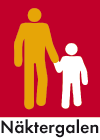
 Interkulturelles Mentoring
Interkulturelles Mentoring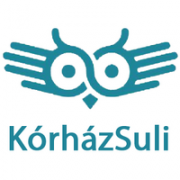
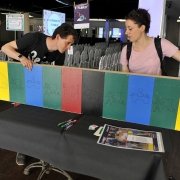 (C)E-Fabrik • G.de CROP
(C)E-Fabrik • G.de CROP